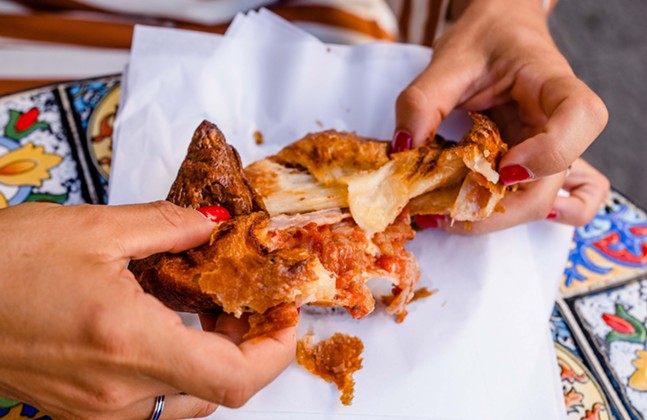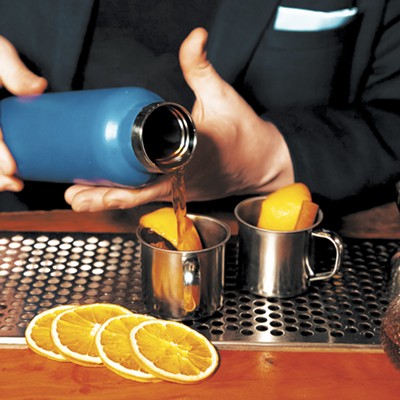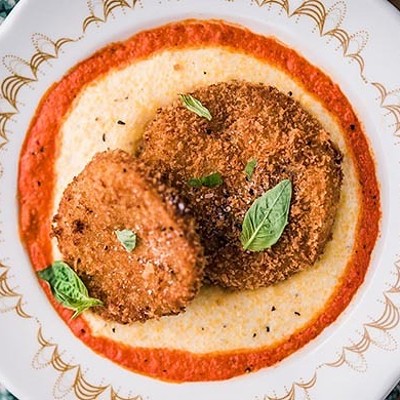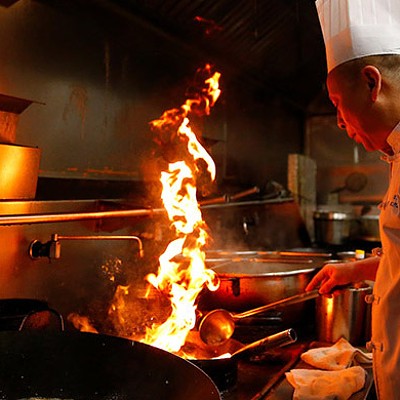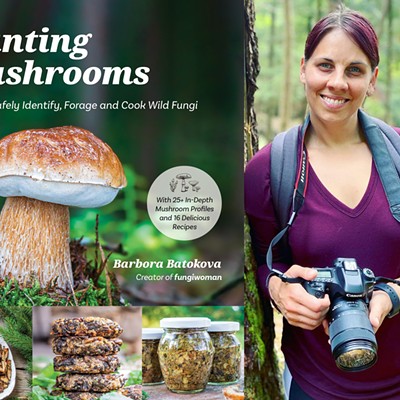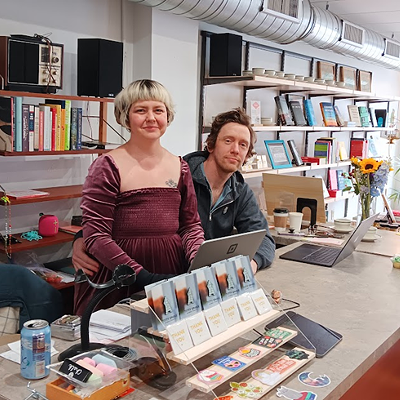She wasn’t sure how she was going to accomplish her goal — Parla wasn’t even sure what she wanted to do, save live in Italy and explore Italian cuisine. But there was no question where she wanted to be.
“I studied Italian history and culture and art,” Parla tells Pittsburgh City Paper. “And then a few years after landing in Italy, I did my master’s in Italian gastronomic culture because I felt like if I was going to tell anyone about Italian food, which is this vast, national set of cuisines, I should have the academic chops to back it up.”
Parla, who lives and works in Rome, will appear on Sat., Aug. 26 at Bar Marco in the Strip District to promote her latest cookbook, Food of the Italian Islands: Recipes from the Sunbaked Beaches, Coastal Villages, and Rolling Hillsides of Sicily, Sardinia, and Beyond. The event will feature an aperitivo spread of island-inspired items including arancini, panelle, braised lamb, fregula with clams, and much more. (Unsurprisingly, the appetizing event has already sold out.)
The recipes from Food of the Italian Islands range from cernia alla Lampedusa (grouper with capers, olives, and tomatoes) to pane carasau (crispy Sardinian flatbread). The featured recipes are light years removed from what most Americans consider to be Italian food and reflect the country’s regional and sub-regional cuisines.
While the country boasts a long, storied, and respected food history, Parla points out that the dishes featured in her book are not a reflection of what Italians have eaten for millennia.
“What we eat in Rome has changed dramatically in the past 50 years,” she says. “It’s not as though we’re eating the things that peasants and popes and shepherds did in the Renaissance.”
She adds, “The cuisines that we enjoy, whether in Rome or certainly in Sicily, they’re all reflective of a very modern culture, 20th and 21st centuries. And yet, they’re still incredibly distinct and tell us about ingredients and seasonality and agriculture and migration and conquest, and really define the identity of a place.”
Certain dishes are tied to a place, and variations tend to be viewed as unorthodox choices. If a diner from the Sicilian city of Palermo is looking to be adventurous, they’ll have braciole alla messinesi, meat rolls popular on the other side of the island.
“When you're really trying to shake things up and change the way that you are eating, you'll look at something that's from outside of your space, but usually on your island or the mainland,” Parla says.
Because of their geography and positioning of trade routes, Italian islands were influenced by a range of dialects, subcultures, and cuisines. Arab, Spanish, French and Mediterranean ingredients all were used to flavor dishes.
And those dishes aren’t always the expected. For instance, Sardinia, despite being an island, heavily tilts toward meat dishes, not fish.
Parla explains that, when on holiday in Sardinia, or any European coastal region, “what you’re eating is a variety of food that was unsafe to gather until pretty recently, with large-scale fishing replacing smaller vessels, which were often at-risk during storms.”
A lack of refrigeration and ice also influenced how island residents dined and cooked.
“If you were a Sardinian person anywhere on the island, the odds are you’re going to have a little bit of distance from the coast so you could see invaders or pirates coming, and so that you could protect your food if you came under some sort of attack,” she explains. “And that you would have a mastery of the land which would produce food in a much more diverse way with more potential for nutrition than just fish could offer.”
While there’s a long tradition of dried fish or tinning tuna, other dishes tend to be more popular. Thus, the book includes Sardinian recipes for pane frattau (flatbread with tomato, eggs, and pecorino) and zuppa di fagioli e pancetta, a simple pork-and-beans soup.
“When people say I want to get your book, but I don’t like fish, I tell them don’t worry about it,” Parla says with a laugh. “There’s not that much fish. There’s some, but it’s a lot of other stuff.”Food of the Italian Islands: Recipes from the Sunbaked Beaches, Coastal Villages, and Rolling Hillsides of Sicily, Sardinia, and Beyond by Katie Parla. katieparla.com


